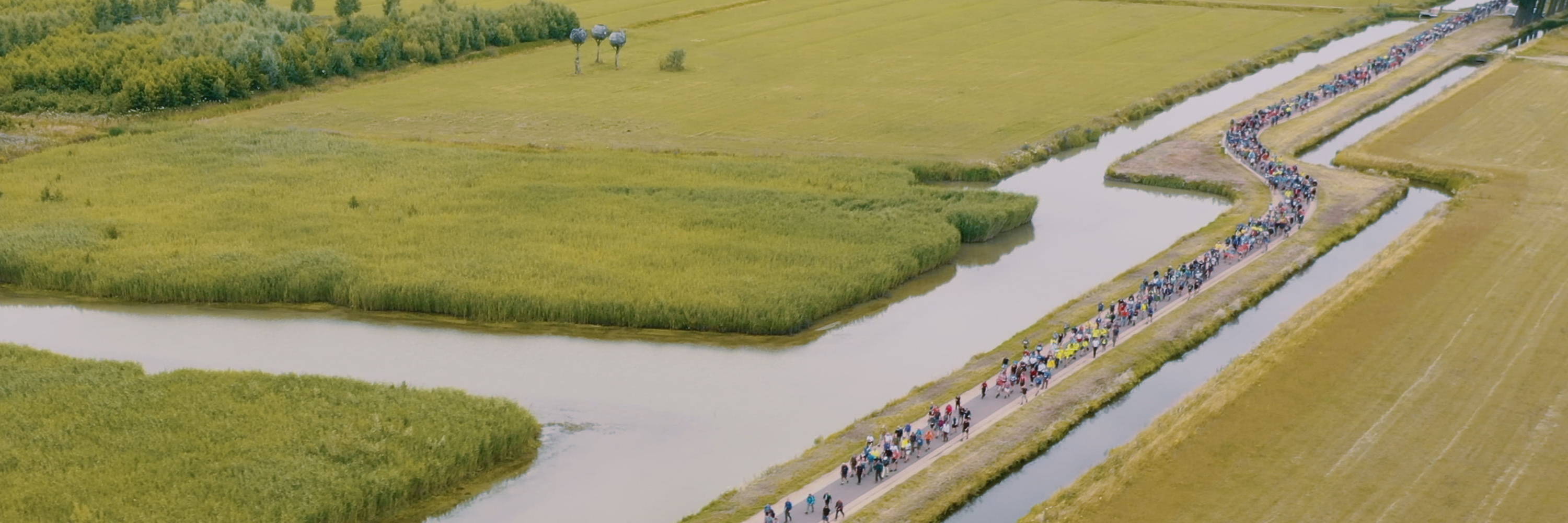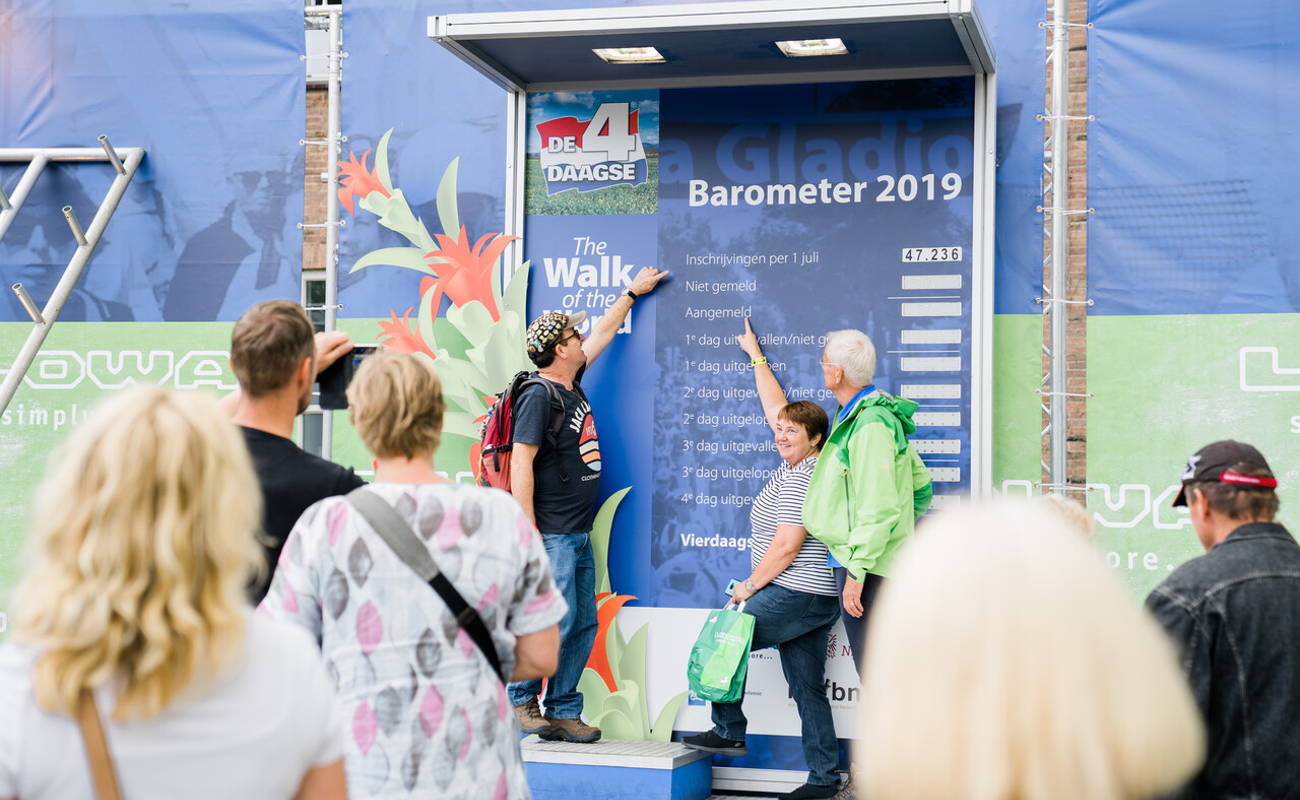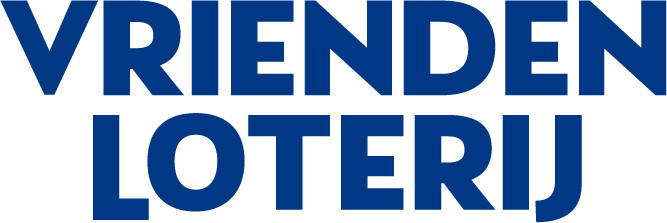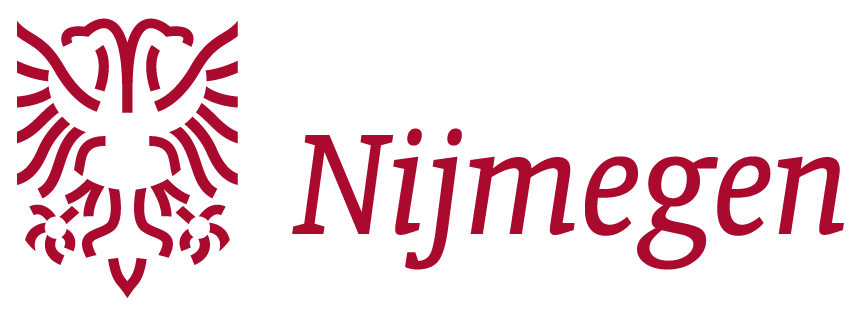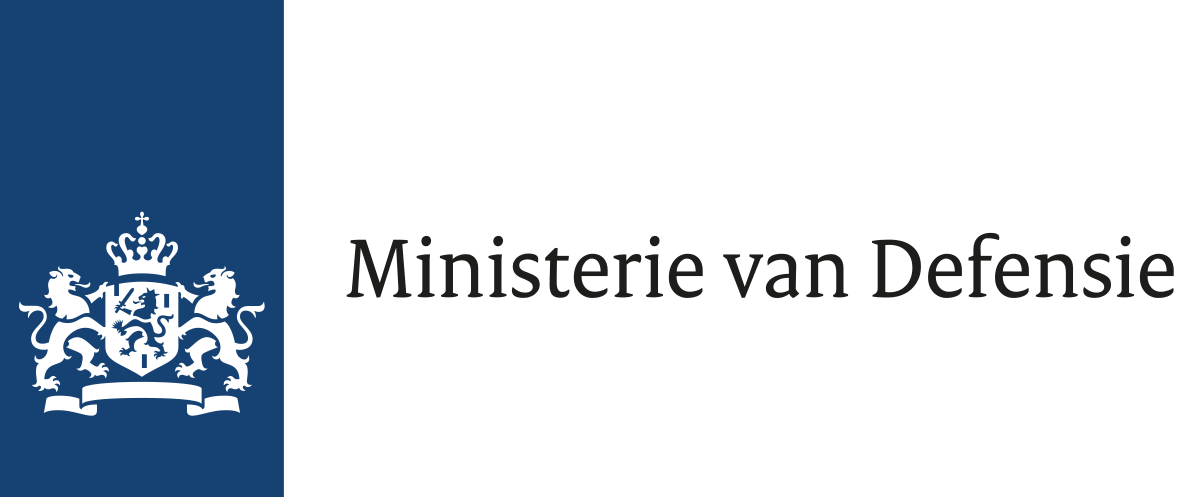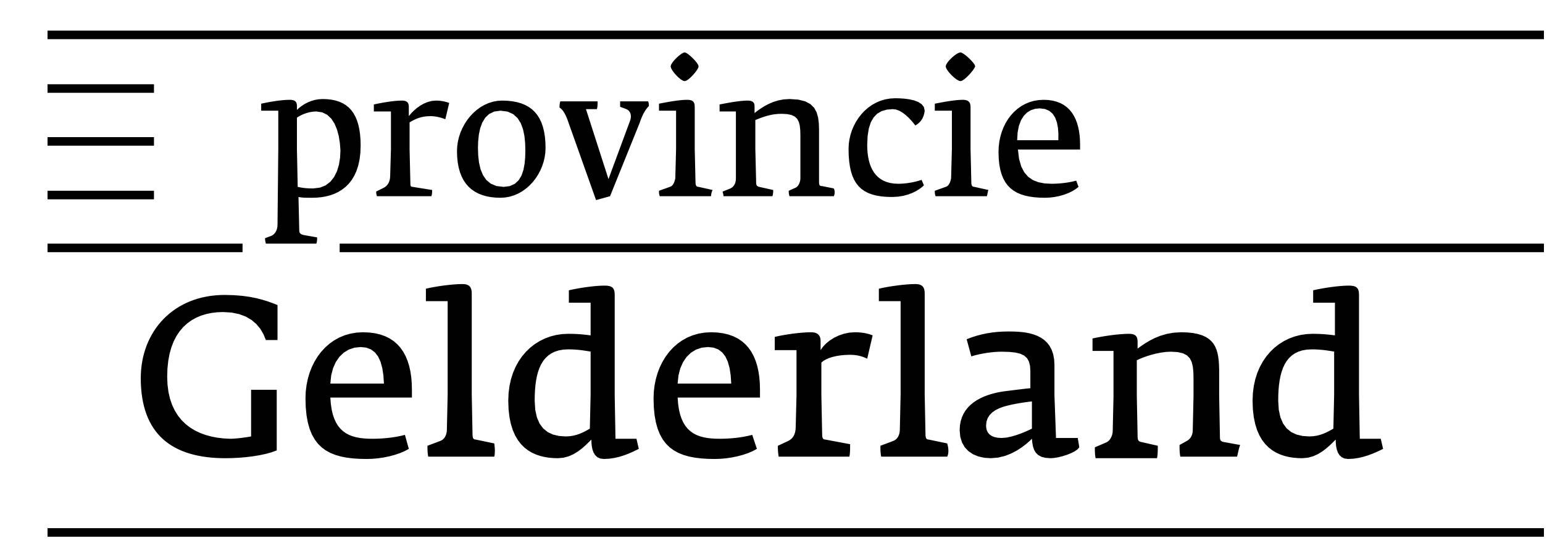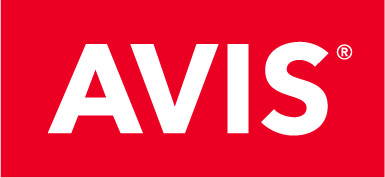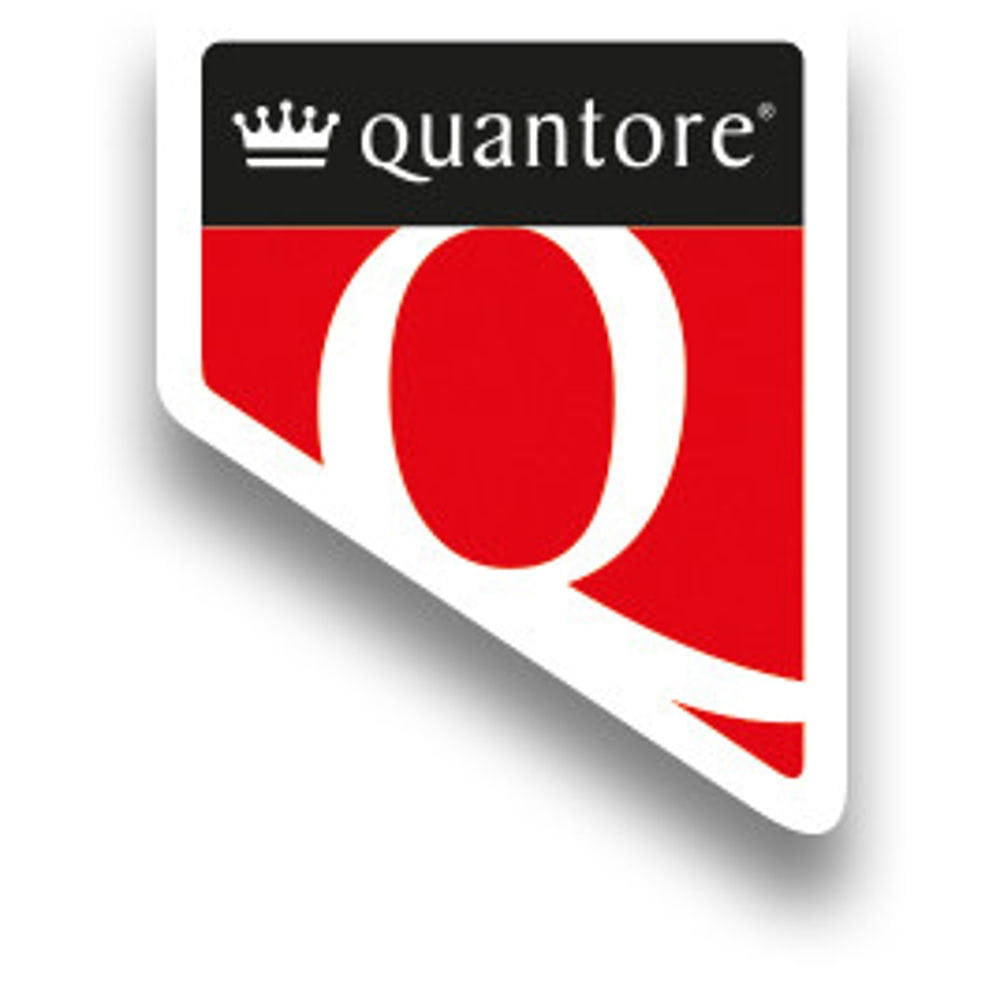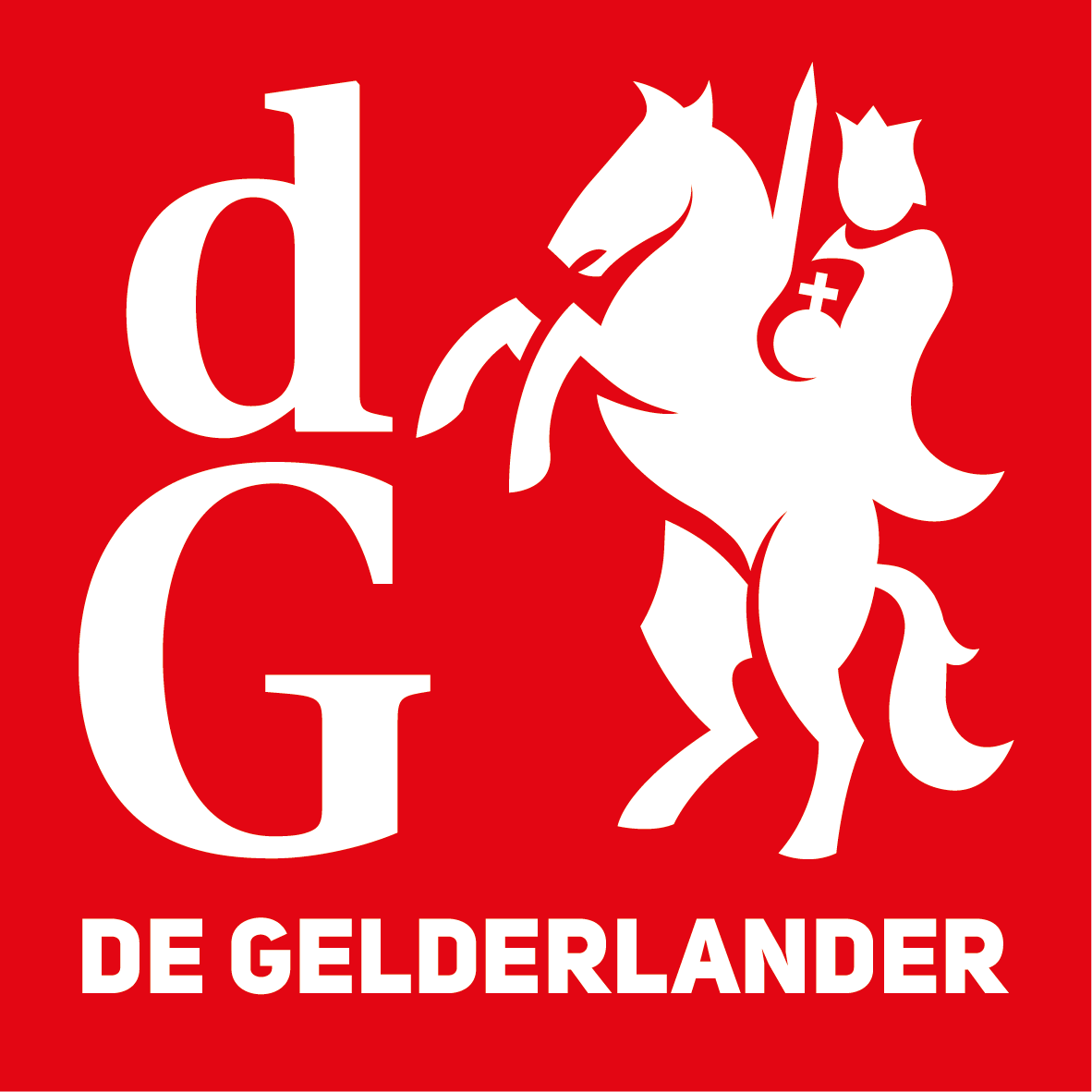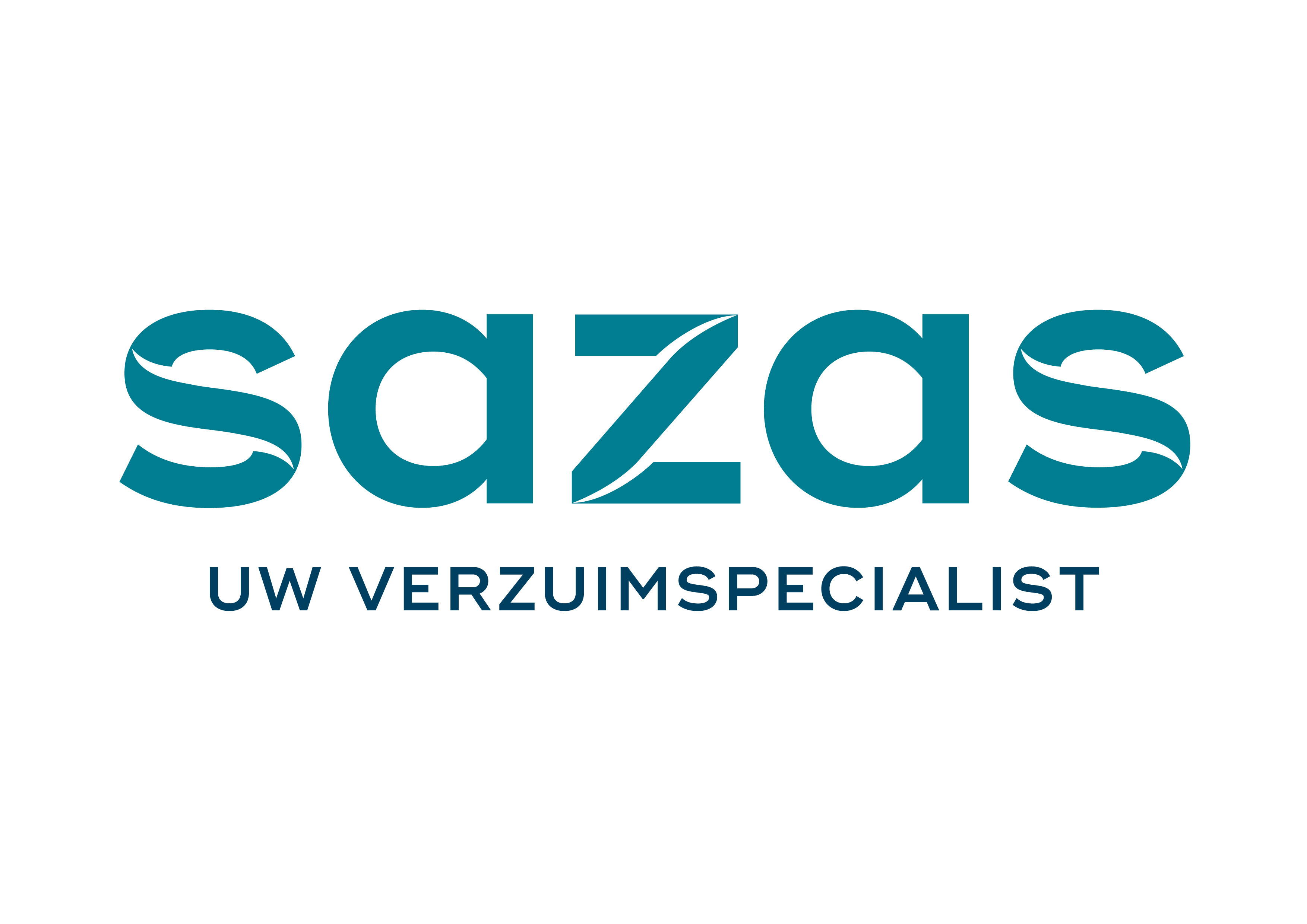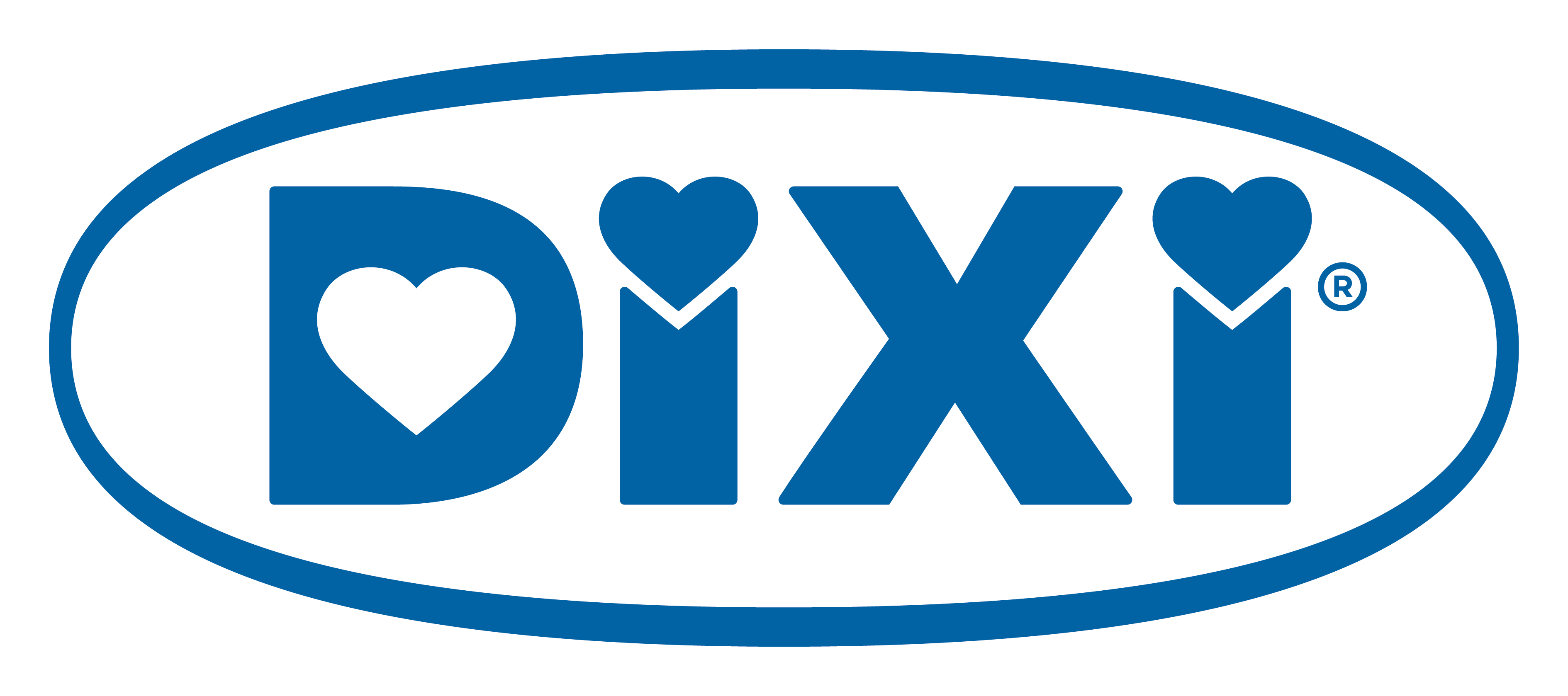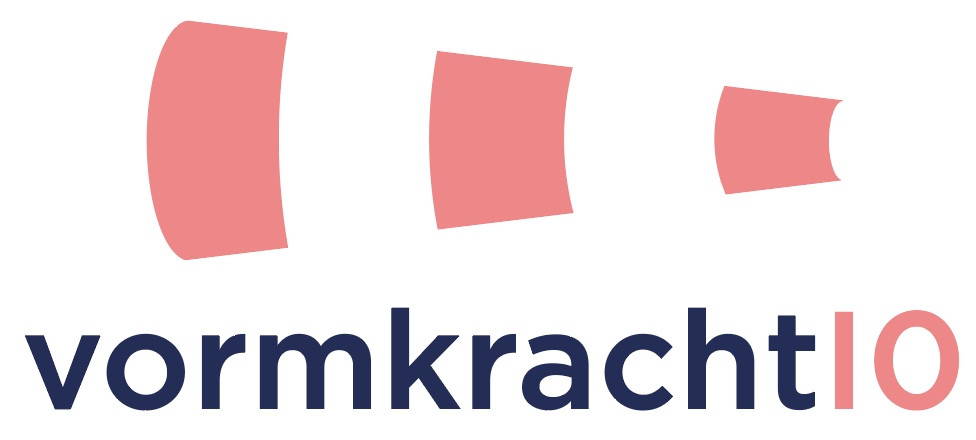
Then... and now!
From 10 to over 45,000 participants, from a few to hundreds of volunteers, from just one to more than 70 nationalities, from one or two incidental spectators to packed grandstands, and from one band to the entire Vierdaagsefeesten. Over a little more than 110 years, a military training march has grown into the world’s largest walking event.
The 4Days Marches moved along with the world’s history. Our event survived world wars, followed social developments, experienced one exceptional low point and reached many incredible heights. This rich history has shaped the event into what it is today: The Walk of the World!

2022: 4Days Marches becomes 3Days Marches
Not four, but three days of walking took place in 2022. Due to extreme heat, it was decided to cancel the first day of walking, also known as 'the Day of Elst'. "It is not responsible to walk on the first day. Other measures, such as starting earlier, are not sufficient," march leader Henny Sackers explained at the time. This unique decision was therefore made.
1909: The very first starting shot
The 4Days Marches goes back more than 120 years. On Wednesday 1 September 1909, the starting shot was fired for a long-distance walking event that would eventually grow into The Walk of the World. The idea of a long-distance march over a period of four consecutive days came from a military man. The objective was to build up the soldiers’ stamina. The 296 participating soldiers and 10 civilians departed from 10 barracks, marching over no fewer than 15 routes to reach Breda. Organising this over so many routes was too much of a hassle, so the next year there was just one starting point: Arnhem.


1916: Bored soldiers
WWI had been raging for two years by this point, during which time there had been no ‘four days marches’. The army of neutral party the Netherlands was on standby though, and the soldiers were terribly bored. So the minister agreed to a 4Days Marches on one condition: no more than 20 soldiers per regiment could participate. After all, you never know when a country will invade, despite your neutrality. The 171 servicemen were stationed in barracks or tents and slept on straw.
1925: Starting off from Nijmegen
In 1925, Nijmegen became the 4Days Marches’ permanent start and finish location. Arnhem, Utrecht, Amersfoort, Den Bosch and Breda had also served in this role, but nowhere had the hospitality been so great as at the Prins Hendrik Barracks in Nijmegen, right from 1913. Instead of brown beans with bacon, the barracks served the walkers soup, meat, potatoes and vegetables, and blancmange. There were sleeping quarters and even bathing facilities. And, not unimportant either, the routes through and around Nijmegen proved to be the best.


1928: The Walk of the World
This year’s Olympics in Amsterdam were a great incentive to admit foreigners for the first time: Germany with 48 soldiers, the United Kingdom with 40 civilians, one Frenchman and 20 Norwegian soldiers. After three warnings, the Norwegians were disqualified on the last day: each day they were the first to arrive at the finish line, even running part of the way. The 4Days Marches is not a competition, however. As it turned out, they were being paid by a Norwegian newspaper to be the first over the finish line each day.
1932: The 4Days Marches song
Natuur gaf ons een motor mee, van 't allerbeste merk... Every year, you can hear these words – which loosely translate as ‘Nature gave us an engine, from the highest quality brand’ – being sung on and alongside the route. The score was written for the event by Nijmegen composer H. A. van Mechelen and the lyrics by J. P. J. H. Clinge Doorenbos. The march coordinators were very happy with this marching song (and still are today). The time was ripe for a song that brings people together: for the first time, there were more civilian walkers than military participants.


1946: Working hand in hand
After a six-year absence, the 4Days Marches was back. Now that WWII was over, Nijmegen had to pull out all the stops to hold the event: cities like Breda were just waiting to pounce. Funds were raised from among the citizens, businesses cooperated, soldiers stayed overnight in schools, civilian walkers slept at the homes of local residents, and countless locals volunteered to help out. The love of the people of Nijmegen for our event has remained as strong ever since.
1956: Steady growth
What do you do after walking 200 kilometres? Swing, of course…The first Blister Ball was held in 1922, with a band providing the music. By 1956 – the 40th 4Days Marches – the dance party had grown to include three dance bands playing for hundreds of walkers. In the 1950s, the event grew steadily, from 6,855 participants at the start of the decade to 13,492 by the end. This meant more work for the organisers, which in turn meant more volunteers to make sure it all ran smoothly.


1967: A Royal participant
This was the year of Prince Claus, who had trained by walking more than 600 kilometres and walked the event without a single blister. As the Prince passed through the town of Elst, the crowd threatened to become a bit too enthusiastic. ‘But after the first day,’ explained Prince Claus himself, ‘the people got used to the “odd character” and let us walk undisturbed.’ Princess Beatrix awaited him on Via Gladiola. Prince Claus found ‘Nijmegen’ a unique experience, and his 4Days Marches Cross was displayed next to his coffin when he died in 2002.
1970: Vierdaagsefeesten
In 2019, more than 1.6 million guests visited the parties, music events and other celebrations that make up the Vierdaagsefeesten. The first Zomerfeesten (summer festivals) were held in 1970. The 4Days Marches were attracting more and more people, but there was nothing else to do in the city, so a few small businesses got together to do something about this. The city was decorated, and stages and stalls opened along the streets. Over the course of the 1970s and 1980s, the Zomerfeesten grew into a mega festival, one that is now the largest event in the Netherlands. And more importantly, nothing else comes close when it comes to atmosphere.


1982: Protest
In the early 1980s, the action group Is het hier oorlog? (Are we at war?) participated in the marches several times. They were protesting against ‘the military nature’ of the 4Days Marches, to the annoyance of many of their fellow walkers, the spectators and the organisers. The activists carried the Ban the Bomb flag and refused to walk over the military pontoon bridge at Cuijk. In 1984, they were disqualified. The incident even resulted in questions in parliament directed at the Minister of Defence. Times have changed: the military has been walking without their weapons for years now.
1984: Pink Wednesday
Pink Wednesday is now one of the highlights of the 4Days Marches. The incentive for starting the pink festivities was less fun though. In the early 1980s, anti-gay riots arose during the Vierdaagsefeesten, as a result of which interested parties organised alternative festivities. These grew to become one of the largest and most well-known LGBTIQ+ events in the Netherlands. On the second day of the walking event, the route becomes a sea of pink and everyone joins in to make this one big swinging pink party where everyone is welcome.


1989: Walking unites people
For the first time, Russian soldiers participated in the 4Days Marches: 27 cadets and one officer. They slept at Camp Heumensoord, where the Americans were also staying. This photo by photographer Jan van Teeffelen made its way around the world: an American servicewoman sitting on a Russian soldier’s lap, an image that typified the end of the Cold War. The Russians were a bit timid at first, afraid of being booed. Their concern proved unnecessary, and they were cheered and applauded everywhere. Walking unites people.
1995: Rolling along the route
In 1995, wheelchair users participated for the first time. The organisers were not all that happy about it, but State Secretary for Health, Welfare and Sport Erica Terpstra wanted to try it out. There had been calls for wheelchair users to be allowed to join in as early as in the 1970s. Not everyone was equally friendly to the eleven new participants, and when the organisation refused to change the regulations in 1997, the City of Nijmegen was ‘not amused’. The wheelchair users have since been officially included as participants, though it still took until 2009 before they could be awarded the 4Days Marches Cross.


2004: Reward system reviewed
As of 2004, there is no distinction in terms of the reward granted to men and women. A Frisian walker complained to the Dutch Equal Treatment Commission about discrimination. He received a certificate for completing the 40km distance, while women in his age category covering the same distance were given a medal. The committee ruled that making this distinction is technically against the law. The reward system was reviewed and the certificate was discontinued as an official reward.
2005: Record number of registrations
In 2005, we introduced selection by draw for the first time. With room for 47,500 walkers, the record number of 53,336 people who registered for a place was just too many. It had already become apparent to us in 2004 that the 4Days Marches was simply growing too fast. Walkers were complaining about overcrowding along the routes. A limit on the number of participants was set in that year, on the basis of ‘first come, first served’. However, from 2005 the entry selection by draw was initiated.


2006: Low point
During the 90th edition of the 4Days Marches something happened that had never happened before: the event was called off after just one day. On that first sweltering day two walkers collapsed and died, and hundreds of others fainted from the heat. Ambulances were coming and going, transporting dozens of participants to various hospitals. The sadness and dismay was enormous, and we learned our lesson. Scenarios have been improved, a meteorologist joined our organisation, and we are much more proactive in informing walkers on a regular basis about the weather and the measures to be taken. At the same time, we point out to them that they are responsible for their own participation.
2016: 100th anniversary
The 100th 4Days Marches is one that will never be forgotten. A selection of the many anniversary activities: 50,000 registrations, an extra distance of 55 kilometres, each day a group of 100 walkers walking 100 kilometres, an organic 4Days Marches vineyard, the planting of a 4Days Marches forest, greening of the routes, walking groups who walked from every provincial capital to Nijmegen, a symposium, and an interactive exhibition in Museum Het Valkhof. And the walkers? They made it a real party, cheered on by King Willem-Alexander himself!

2020/21: Two cancellations in a row
Disappointment prevailed, among the walkers and among ourselves and our volunteers: the 4Days Marches was cancelled due to the Covid-19 pandemic. In 2020, this was the first time the event had been completely cancelled in peacetime. And in February 2021, it was with a heavy heart that we decided to bring the preparations to a halt once again. The prospects were not good, and arranging matters so that the walkers could comply with social distancing at the largest event in the Netherlands proved to be an impossible task.
2024: Route shortening
On Friday, the last day of the 4Days Marches, high temperatures were expected in the afternoon. Since the temperature was at its peak between 15:00 and 18:00 hrs CET, coinciding with the festive arrival on the Via Gladiola, the board of Stichting DE 4DAAGSE decided to take measures, including shortening the routes. While shortening the routes is not a first in the history of the 4Days Maches, it is noteworthy.

More info
- Regionaal Archief Nijmegen: 1909-1932
- Nationaal Archief: 1946, 1967, 1982
- Iris Immink: 2004
- Ger Loeffen: 1984, 2016, 2020/21
- Edwin Stoffer: 2005
- Jan van Teeffelen: 1989, 2006
- Hans Teunissen: 1995
We have done our best to identify sources and copyright holders of the images on this page. If you believe that publication is in violation of your portrait and/or copyrights, please contact us via .communicatie@4daagse.nl.
Regionaal Archief Nijmegen (Regional Archive Nijmegen) has quite a collection on the 4Days Marches. To make the collection available for everyone, Regionaal Archief Nijmegen has created a digital encyclopedia at Huis van de Nijmeegse Geschiedenis. This website with information about the history of Nijmegen also offers the possibility to anyone of adding their own articles or personal stories. You can help to create this digital encyclopedia on the greatest more days walking achievement event of the world.
For film footage of the 4Days Marches we would like to refer you to the website of the Nederlands Instituut voor Beeld en Geluid (the Netherlands Institute for Sound and Vision). This is a cultural-historical organization that collects and maintains audiovisual data that is of certain importance for the Dutch historic and cultural heritage, making it accessible for as many users as possible.
Foundation Novio Magus also has a page with interesting information about the history of the 4Days Marches in Nijmegen.
Visit our YouTube channel for more (historical) 4Days Marches-videos!
On this website you can find a number of press releases and statistics of recent years to download.

